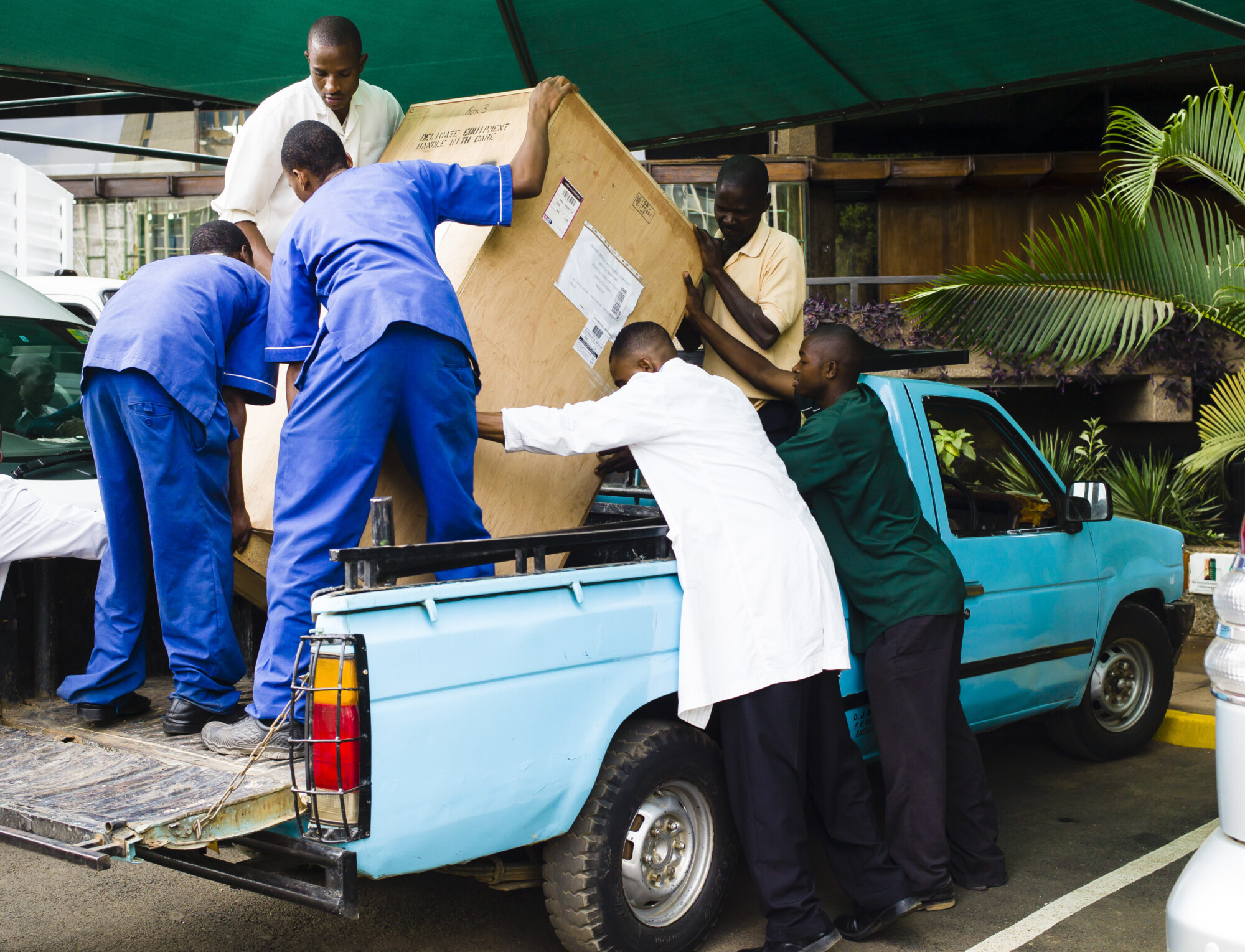
From the First Mile to the Very Last



It’s the last thing that anyone wants to think about. It seems herculean when we describe it to folks. And yet with the shipment of every UAM we need to deal with it.
What, you might ask, are we talking about?
Logistics.
Yes, delivering safer anaesthesia to hospitals around the world is a challenge all in itself, involving coordination among many different people – from here at Gradian to airport personnel to a brave person with a pickup truck in very remote places. And it’s a challenge we gladly take on because it’s always worth it in the end.
Shipping a large piece of medical equipment is not a simple task and because we know we’re not alone in dealing with this challenge – and don’t hear enough people talking about it – we thought we’d share more about our experience with getting a UAM from the factory through the proverbial last mile to its new home in an OR.
Purchase » Plane
It all begins once a UAM is purchased and we need to find a cargo plane that can accomodate a 5 foot tall, crated UAM standing upright. For many reasons, we decided that sending the UAM by air (and not sea) was most efficient, but there are pros and cons to both methods. Finding a plane that can ship a piece of equipment this size is often the first of several challenges. A recent shipment to Somaliland was delayed because the UAM was two inches (yes, two inches!) too tall to fit upright inside the plane.
Working with our magical freight forwarder in the UK, the next step is to book the flight plan and prepare paperwork. Naturally, the requirements and, therefore, paperwork, are different for every country where work. But our freight forwarder knows them all and helps us prepare exactly the documents we need, among them the Air Waybill, Certificate of Shipment, Certificate of Origin, a Shipping Invoice, Packing List and CE Certificate. Our manufacturers then carefully pack the crated UAM in a truck bound for Heathrow Airport.
Plane » Port of entry
The UAM typically arrives at the airport of entry 2-5 days after it leaves the UK (pending no delays – yes, even cargo planes get delayed). Who handles it once it arrives? How does it get from the tarmac through customs and out of the airport?
Usually the hospital arranges for someone to take it through this sometimes tricky customs clearance process. The process of checking and rechecking the paperwork, clearing through customs and registering the unit can take anywhere from a day to a month. The sooner it’s cleared the better, though – every extra day that it stays at the airport, the UAM (or any shipment) incurs storage fees, which can be hefty at times. Throughout this part of the process Gradian’s logistics team is like a mini command center facilitating communication between our team, the clearing agents, the hospital and often their organizations. It is all essential to make sure the machine arrives.

Port of entry » Pick-up truck
Pure manpower is often the final piece of this puzzle. After customs clearance is complete, we need to transport the machine safely from the airport to the hospital, sometimes many hours away and down long (and bumpy) dirt roads. It’s the work of many strong hands – lifting the crate into the bed of a pick up truck – that guarantees a safe delivery of the UAM to the hospital where it’s finally unpacked and wheeled in to the OR where it can begin its real journey of providing safe, reliable anaesthesia to patients.
****

It’s hard to say which of these steps is most important. Every piece of this logistics puzzle is essential to the work we do. Whether it’s the secure packing of the UAM crate, the expertise of our clearing agent, good communication with the hospital and organization(s) involved or the actual hands that carefully load the machine on and off the truck and into the hospital, we feel grateful to have a wonderful crew of people all working hard to make sure that hospitals are equipped with reliable anaesthesia. From the first challenging mile to the very last, making anaesthesia safer in hospitals around the world is truly a team effort and we couldn’t do it without the help of everyone involved along the long (and winding) road.
For some other innovative stories on the challenges of logistics, check out “Making Things Very Boring,” a blog post from Riders for Health and here on how Coca-Cola has found a clever way to deliver drugs to rural parts of Africa. To read more about the UAM and its specifications, see here.